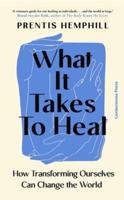Publisher's Synopsis
This essay explores the hypothesis that clinical hypnosis and psychotherapeutic practices are not merely contemporary responses to mental suffering, but the evolutionary continuation of a profound human need to restore emotional regulation disrupted by cultural and technological development. Drawing from anthropology, evolutionary psychology, neuroscience, and ecopsychology, the essay presents an integrative framework for understanding how practices such as hypnosis, meditation, and guided trance have historically served as vital tools for maintaining psychophysiological balance in the face of accelerating cultural complexity.
Beginning with the domestication of fire-symbolically and historically interpreted as a foundational rupture between nature and culture-the essay traces how this pivotal moment granted early hominins control over light, heat, and rhythm, enabling a transition from instinctual living to symbolic abstraction. However, with this power came a cost: the desynchronization of biological rhythms, increased cognitive load, and the emergence of existential anxiety. Drawing on the work of scholars such as Richard Wrangham, Claude Lévi-Strauss, Paul Gilbert, and Sarah Blaffer Hrdy, the text examines the evolutionary and cultural consequences of this disconnection, linking it to modern psychological disorders such as anxiety, depression, and chronic stress.
Clinical hypnosis is then reinterpreted as a structured practice that facilitates the reactivation of parasympathetic nervous system pathways, thereby restoring homeostatic regulation and emotional coherence. Far from being a marginal or mystical technique, hypnosis is presented as a scientifically grounded method that mobilizes the body's innate regulatory mechanisms-particularly those connected to vagal tone, heart rate variability, and sensorimotor integration. The essay emphasizes the importance of inner rhythm, symbolic narration, and body-based awareness as essential to emotional recovery, aligning with current research in affective neuroscience and the psychophysiology of stress (Porges, 2011; Siegel, 2010).
Additionally, the essay introduces metaphor as a central therapeutic tool in hypnotherapy. Through the symbolic restructuring of perception-such as visualizing oneself as a bird, a river, or a biological machine-individuals can reframe experiences, facilitate emotional distance, and engage in neurocognitive reorganization. These interventions support the development of self-observation, narrative reframing, and memory integration, all of which are critical components of long-term healing and personal transformation.
The text also situates hypnosis and psychotherapeutic practices within a broader ecological and anthropological context. By referencing ecopsychological thinkers such as Theodore Roszak and Joanna Macy, the essay argues that modern psychological suffering must be understood not only as an individual phenomenon but as a symptom of systemic disconnection from natural environments and embodied rhythms. Emotional regulation, in this light, becomes a collective and ecological imperative, calling for a reconceptualization of therapy as a practice of reconnection-with the self, with others, and with the planet.
In conclusion, the essay asserts that clinical hypnosis and psychotherapy should be viewed not only as methods for treating psychological dysfunction but as pedagogies of slowing down, listening, and reintegration. They offer tools to counteract the excesses of cultural acceleration and restore an ancient but forgotten wisdom: the capacity to regulate from within. This process, deeply rooted in human history and biology, represents an essential form of resistance to the chronic fragmentation of modern life and provides a path toward inner coherence and adaptive resilience.





